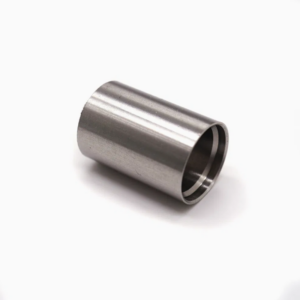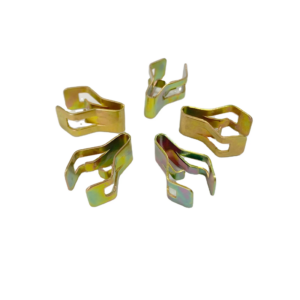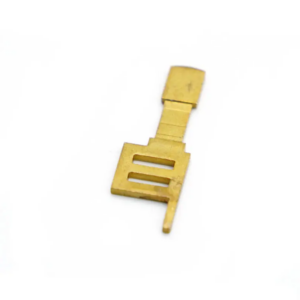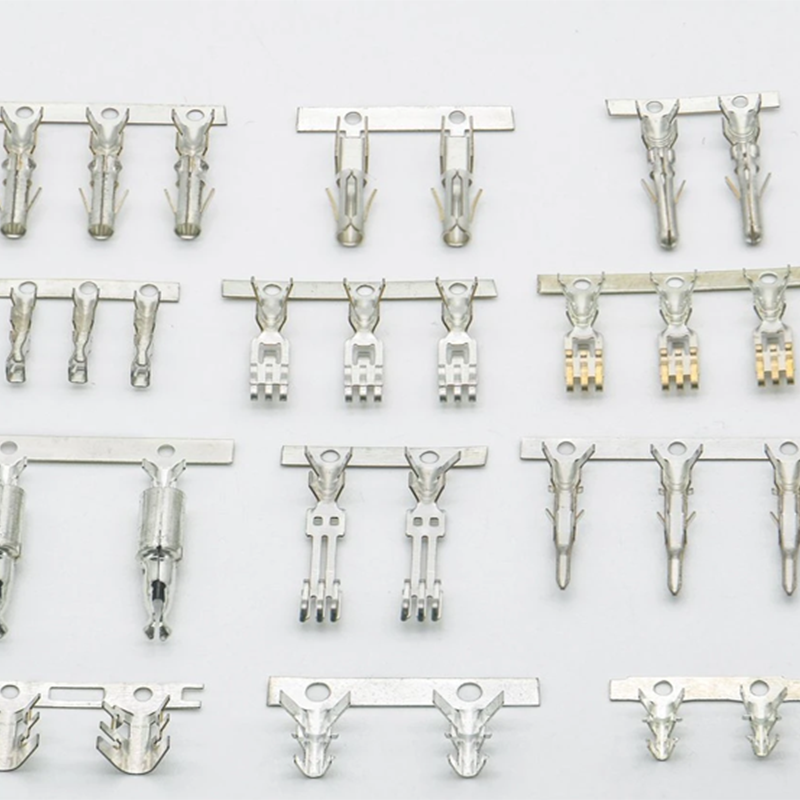When designing and building electrical systems, whether for automotive, industrial, or consumer electronics, one critical decision stands out: selecting the right electrical terminal. Despite their relatively small size, electrical terminals play a significant role in ensuring a secure, reliable, and efficient connection within any electrical circuit. The proper choice of terminal can make a world of difference in the performance, longevity, and safety of your system.
In this blog, we’ll explore the various types of electrical terminals, their specific applications, and the important considerations to keep in mind when choosing the best terminal for your project. We’ll also discuss key factors such as material selection, environmental conditions, and compliance standards that can impact your terminal choice.
What Are Electrical Terminals?
At its most basic level, an electrical terminal is a component used to connect a wire to another electrical device, system, or component. It allows electricity to flow from one part of the circuit to another, serving as the interface between the wire and the device it powers. Electrical terminals are typically made from conductive metals, such as copper, brass, or aluminum, and are often coated or plated to enhance their resistance to corrosion and wear.
The design of electrical terminals varies to suit different connection types and applications. Commonly, terminals are grouped together in modular blocks, known as terminal blocks, which allow multiple connections within a single insulated housing. For most applications, terminals are attached to wires through a crimping process, which uses a tool to compress the terminal around the stripped end of the wire, creating both an electrical and mechanical connection. Soldering is another method for certain scenarios, though crimping is the preferred approach due to its reliability in modern electrical systems.
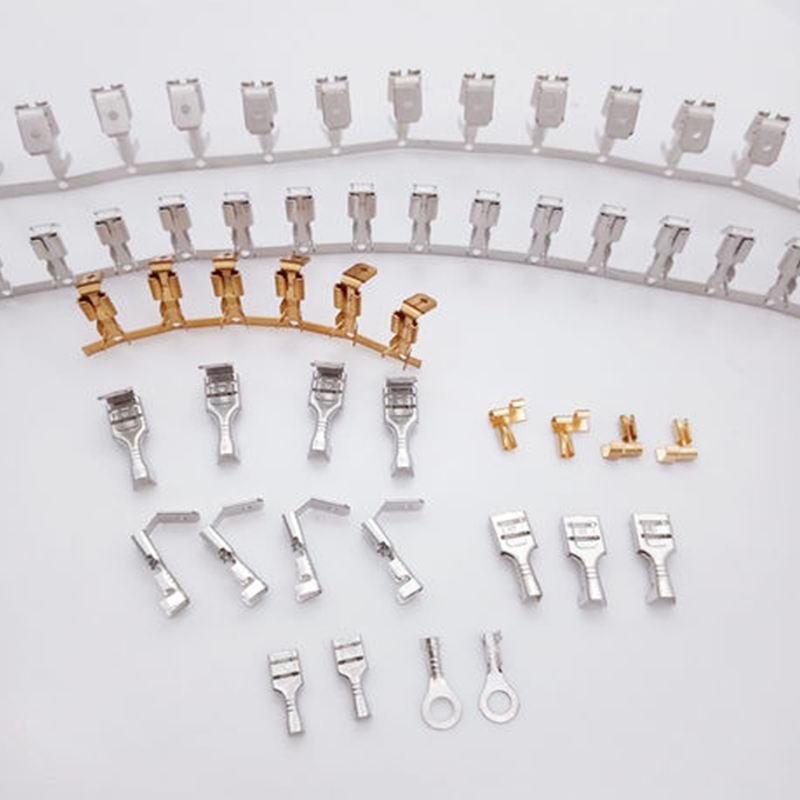
Common Types of Electrical Terminals
With a broad range of terminals available, selecting the right one can be a daunting task. Below is an overview of the most common types of electrical terminals, detailing their designs, uses, and ideal applications.
-
Ring Terminals
Ring terminals are one of the most commonly used and versatile types of electrical terminals. Their design features a circular ring that allows the terminal to be securely attached to a screw or bolt. This type of connection is especially beneficial in high-vibration environments, such as automotive and industrial machinery applications, where stability and durability are essential. The ring-shaped connection ensures that the terminal remains in place even under mechanical stress, preventing accidental disconnections and providing long-lasting reliability.
-
Spade Terminals (Fork Terminals)
Spade terminals, also known as fork terminals, are another widely used option. These terminals feature a fork-shaped design, which makes it easy to connect or disconnect them from a bolt or screw. This design is especially useful in situations where maintenance or modifications are needed frequently. Spade terminals are commonly found in bus bars and similar systems, allowing new wires to be added without removing existing connections. Their simplicity and ease of use make them ideal for industrial and automotive environments.
-
Hook Terminals
Hook terminals have a unique hook-shaped design, making them easy to connect quickly without needing to remove a screw. This feature is particularly valuable in installations where space is tight, and quick connection is necessary. Hook terminals are widely used in consumer electronics and other compact devices where maneuverability is limited. The design allows for rapid, secure connections that can withstand mechanical stress and ensure reliable operation in dynamic environments.
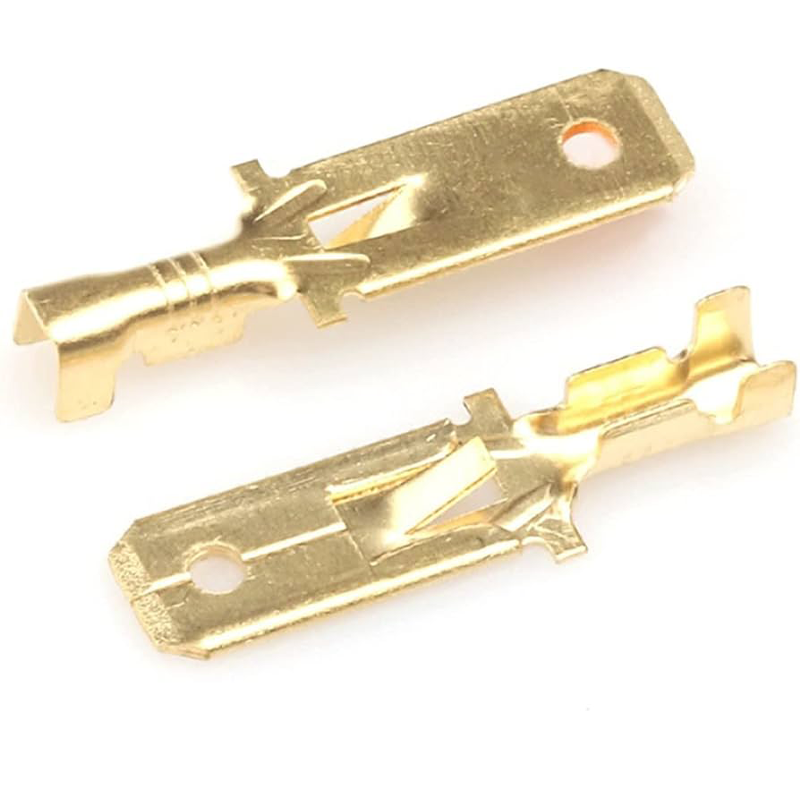
-
Quick-Disconnect Terminals
Quick-disconnect terminals, or quick-connect terminals, are designed for applications that require frequent connections and disconnections. These terminals typically consist of male and female components, with the male end sliding into the female terminal to form a secure connection. The quick-disconnect feature makes them perfect for automotive, consumer electronics, and appliance applications, where easy maintenance and repair are critical. The ability to disconnect and reconnect quickly without tools enhances convenience and reduces downtime.
-
Bullet Terminals
Bullet terminals are designed with a cylindrical pole that fits into a matching socket, forming a tight and reliable connection. These terminals are often used in automotive and industrial applications where durability and resistance to harsh environmental conditions are crucial. Bullet terminals excel in situations where moisture, dust, or vibration may be present, protecting wires from external contaminants and maintaining a secure connection in challenging environments.
-
Butt Terminals
Butt terminals are used to connect two or more wires together securely. Their design includes open ends into which wires are inserted. Once inserted, the ends are crimped, forming a permanent and solid electrical connection. Butt terminals are commonly used in outdoor and marine environments, where protection from moisture and corrosion is essential. Their ability to create secure and weatherproof connections makes them ideal for systems exposed to the elements.
-
Flag Terminals
Flag terminals are distinguished by their unique flag-like shape, which provides a compact and secure connection. These terminals are perfect for applications where space is limited, such as in small electronic devices or complex circuit boards. The compact design of flag terminals allows them to be used in tight spaces that other types of terminals might not fit. Their user-friendly nature and versatility make them a valuable option in applications where space constraints are a significant factor.
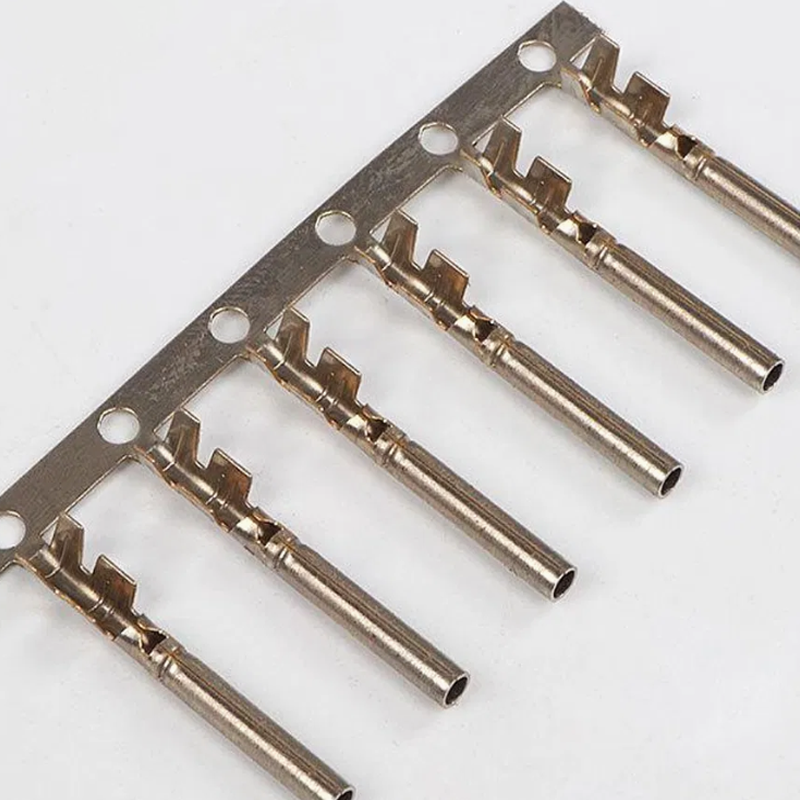
Key Factors to Consider When Selecting Electrical Terminals
Choosing the right electrical terminal requires more than simply selecting a size and shape that fits the wire. Several critical factors must be considered to ensure a safe, efficient, and long-lasting connection.
-
Selezione dei Materiali
The material of the terminal significantly influences its performance, particularly in terms of conductivity and durability. Common materials for electrical terminals include:
- Copper:Known for its excellent electrical conductivity, copper is the most widely used material for electrical terminals. It is ideal for most applications, ensuring efficient power transmission.
- Brass:Brass terminals offer good corrosion resistance and are often used in applications where environmental factors, like humidity and moisture, are a concern.
- Aluminum:Aluminum is lightweight and corrosion-resistant, making it suitable for applications where weight is a critical factor, such as in aerospace or lightweight automotive systems.
Many terminals are plated or coated with materials such as tin, nickel, or gold to enhance corrosion resistance and improve overall performance, especially in harsh environments.
-
Wire Gauge Compatibility
Each electrical terminal is designed to accommodate a specific wire gauge, which directly impacts the security of the connection. If the terminal is too large, the wire may not be held securely, leading to poor electrical performance. Conversely, a terminal that is too small may not fit the wire properly, leading to potential damage or disconnection. Always ensure that the terminal size matches the wire gauge for optimal performance.
-
Environmental Conditions
Consider the environment in which the terminal will be used. For high-vibration, high-temperature, or corrosive environments, terminals with secure and tamper-resistant designs are essential. Materials such as tin-plated copper, nickel, or special coatings can provide enhanced protection against wear, corrosion, and environmental degradation. Additionally, consider whether the terminal needs insulation or weatherproofing features to withstand specific conditions.
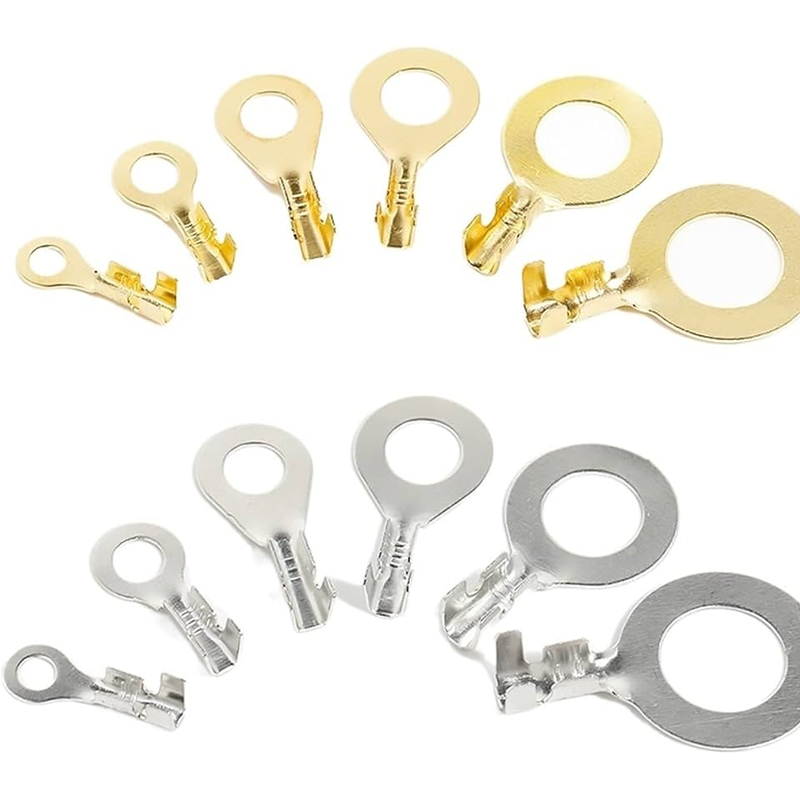
-
Compliance and Safety Standards
Always verify that the terminal meets relevant safety certifications, such as UL (Underwriters Laboratories), CSA (Canadian Standards Association), or CE (Conformité Européenne). These certifications ensure the terminal meets specific safety, performance, and durability requirements. Additionally, check the terminal’s voltage and current ratings to ensure it can handle the expected electrical load for your application.
Conclusion
Selecting the right electrical terminal is a vital step in ensuring the functionality, safety, and longevity of your electrical systems. Whether working with automotive systems, industrial machinery, or consumer electronics, the correct terminal guarantees a secure, efficient, and reliable connection. By considering factors such as material, wire gauge, environmental conditions, and compliance standards, you can make an informed decision that enhances the overall performance of your project.
When in doubt, consulting with an expert can provide invaluable insight into selecting the perfect terminal for your application. Contact our team for personalized guidance and support in choosing the ideal components for your next electrical project. We are here to help you navigate through the various types of terminals and ensure your connections remain strong and reliable.

